To celebrate Science at the Shine Dome 2025, our ‘Wheel of time’ artwork pays homage to Australian scientific milestones: from the nation’s first scientists to how AI might help shape the smart cities of the future.
It recognises the contributions of many Academy Fellows and other leading scientists – with all images brought together to resemble the shape of the iconic Shine Dome building as seen from above.
The concept, design and animation were created by graphic designer Leah Albert for the Australian Academy of Science.
The Australasian Antarctic Expedition image was sourced from the Academy archives, as were the images of the newly built Shine Dome theatre and exterior.
Help make history with us by supporting the digitisation of our valuable and unique archives. We also invite you to support our Conversations with Australian Scientists series, where the personal lives and careers of some of Australia’s most eminent scientists are being documented.
Each of the following images is represented in the artwork, starting clockwise from above the word ‘Science’. Click on the image for a large version.
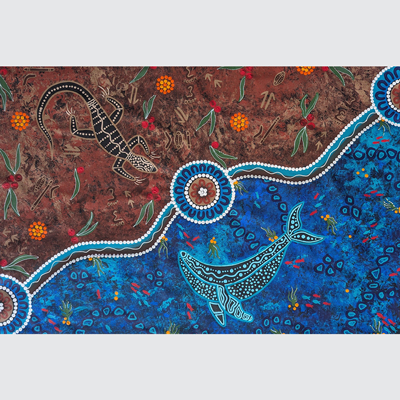
Artwork: ‘Mirning Country’. Credit: Presten Warren
Rooted in the ancestral heritage of the Mirning people of the far west coast, this artwork serves as a tangible link to ancestral roots. Inspired by the land and waters, it incorporates elements of native plants and animals, symbolising a spiritual connection to Country. — Presten Warren
Reconciliation between non-Indigenous peoples and Australian Aboriginal and Torres Strait Islander peoples is essential to progressing the Academy’s vision of a scientifically informed community that embraces excellence in science and is guided by, and enjoys the benefits of, scientific endeavour. Embracing the Traditional Knowledges and cultures of Australia’s First Nations peoples, forged over thousands of years, will build a stronger, more innovative and more sustainable nation.

Image: ‘Sheep & wheat’ cartographic material by George Philip & Son, showing wheat growing and sheep grazing areas in 1920s Australia. Source: National Library of Australia
After the introduction of wheat crops following the British colonisation of Australia, William Farrer experimented in crossbreeding to produce ‘Federation’ wheat. This was the first specifically Australian variety that was resistant to both rust and drought.
Several Academy Fellows subsequently made significant contributions to wheat research. They include Professor Irvine Watson (1914–86), a world leader in the study and breeding of rust resistance in wheat, and Professor Graham Farquhar, who in 2017 became the first Australian to win the prestigious international Kyoto Prize for his development of new water-efficient wheat varieties.
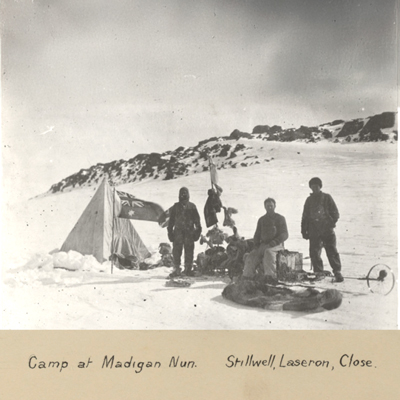
Image: ‘Camp at Madigan Nun[atak] – Stillwell, Laseron, Close’. Source: Fenner Archives, Australian Academy of Science
Frank Stillwell (1888–1963) was invited to join the Australasian Antarctic Expedition by Sir Douglas Mawson (1882–1958), during which Stillwell kept careful diaries.
These diaries, along with other field notes and photographs of Stillwell’s broader career, were digitised as part of an ongoing collaborative project between the Australian Academy of Science and the National Library of Australia.
Both Stillwell and Mawson went on to be elected Fellows of the Academy.

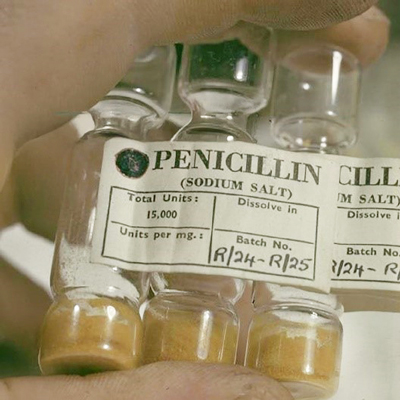
Image: 1944 WWII Vintage Schenley Lab advertisement. Source: RetroAd Archives, Alamy Stock.
Image: The synthetic production of penicillin during WWII. Source: Wikimedia Commons
Howard Florey (1898–1968), an Australian Nobel Prize-winning scientist, is one of many Academy Fellows whose contributions have changed the world.
After the discovery of penicillin by Alexander Fleming in 1928, it was a team led by Florey and German refugee Ernst Chain that made the drug medically useful in the 1940s.
This is thought to have saved thousands of lives during WWII, and afterwards – when it was made publicly available – changed the prognosis for many illnesses that were previously fatal.
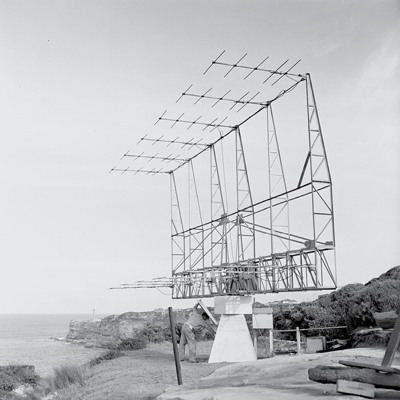
Image: The final 12-Yagi 100 MHz antenna at Dover Heights in Sydney, with John Bolton checking the receiving equipment at the base. Source: CSIRO
Realising Australia’s vulnerability to air attack following the Japanese air raid on Darwin in 1942, the Radiophysics team at the Council for Scientific and Industrial Research (CSIR, later CSIRO) developed a radar station at Collaroy Plateau in Sydney, based off the existing shore defence radar at Dover Heights.
Towards the end of WWII, the team could then pivot to new fields of civil research – including investigating the sources of unknown and nuisance radio ‘noise’ detected with radar by several countries during the war. It was here that in October 1945, Academy founding Fellow Joseph (Joe) Pawsey, with Ruby Payne-Scott and Lindsay McCready, performed the first successful radio astronomy observations in Australia.
The trio continued monitoring the Sun until March 1946, making surprising discoveries, including that significant fluctuations in emitted radiation were correlated with sunspots on the Sun’s surface, as well as detecting a base level of thermal radiation around 100 times higher than expected.
The team went on to develop new instruments and techniques at Dover Heights and other stations, ultimately cementing Australia’s reputation as a leader in the emerging global field of radio astronomy.
Pawsey’s life’s work, including his role mentoring younger scientists such as Payne-Scott and McCready, was described in a 2023 biography ‘Joe Pawsey and the Founding of Australian Radio Astronomy’.
The Ruby Payne-Scott Medal and Lecture for women in science is one of the Academy’s most prestigious awards, while the Pawsey Medal for outstanding contributions to research in physics was the second medal struck by the Academy.
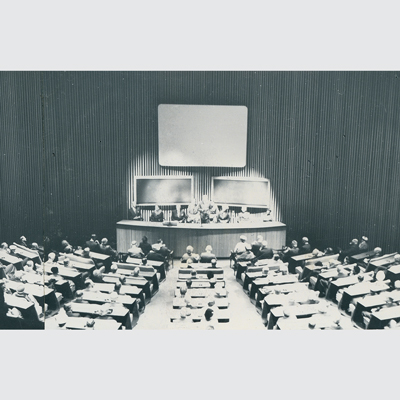
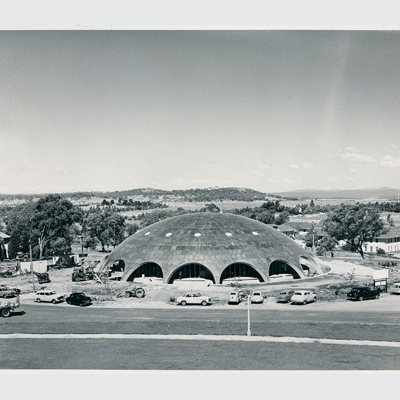
Images: The opening of the Shine Dome (previously known as Becker House). Source: Fenner Archives, Australian Academy of Science.
The Shine Dome, the Academy’s unique heritage-listed building, was built to provide the Australian Academy of Science with a home. Sir Mark Oliphant, the founding president of the Academy, led the charge in the early 1950s to find funds for the project.
At the opening ceremony in May 1959, luminaries of science and politics gathered to witness then-Governor-General Sir William Slim officially open the building.
In his speech on the day, Academy president Sir John Eccles described the building as looking like “a home for magicians” and presciently imagined the many national and international gatherings that would be held under its roof in the years to come.
“So the Academy goes forward into the future like some great caravan of exploration and discovery, always being joined by new recruits, always enlisting the help of other scientists best fitted for any particular project so that we can continue to command the cooperative effort of the scientists of Australia,” Sir John said.
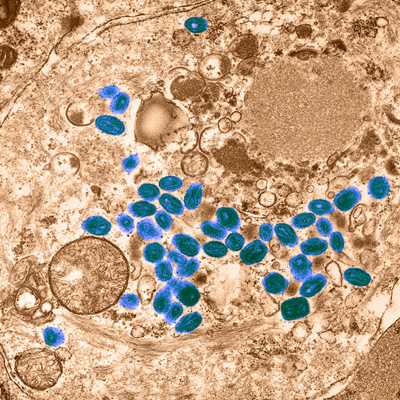
Image: A color enhanced transmission electron micrograph of a cell containing variola (smallpox) viruses.Source: Science History Images / Alamy
Smallpox, the contagious viral disease responsible for millions of deaths, remains the only infectious disease to be eradicated by humanity. It was making the announcement of its eradication to the World Health Assembly in Geneva on 8 May 1980 that Australian virologist and Academy Fellow Professor Frank Fenner (1914–2010) described as the proudest moment of his life.
The Academy’s archives include Professor Fenner’s diaries documenting his role as Chair of the Global Commission for the Certification of Smallpox Eradication and his efforts towards the control of the rabbit plague in Australia.
The Fenner Collection was added to the UNESCO Australian Memory of the World Register in 2019.
Professor Fenner was also interviewed by Dr Max Blythe in 1992 and 1993 for the Academy’s Conversations with Australian Scientists series.
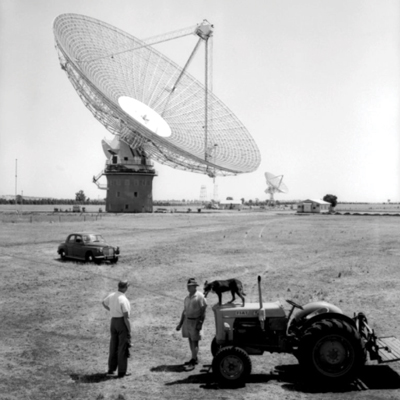
Image: Farmer Australia ‘Austie’ Helm (right), former owner of the land on which the telescope is built, talking with engineer Maurice Puttock. Source: CSIRO
Murriyang, the 64-metre Parkes Radio Telescope also affectionately known as ‘The Dish’, is part of CSIRO’s Australia Telescope National Facility.
Since beginning operation in 1961, it has become one of the most cited radio telescopes in the world: more than half of all currently known pulsars were discovered using it, and re-examination of pulsar observations (from 2001) led to the discovery of the first fast radio burst in 2007.
It was this discovery of fast radio bursts that saw Academy Fellow Professor Matthew Bailes (elected 2022) awarded the 2024 Prime Minister’s Prize.
Following many upgrades since its initial construction, the telescope is now 10,000 times more sensitive than when it was first commissioned.
Local Wiradjuri elders named the telescope Murriyang in 2020, after the ‘Skyworld’ where a prominent creator spirit of the Wiradjuri Dreaming, Biyaami (Baiame), lives.
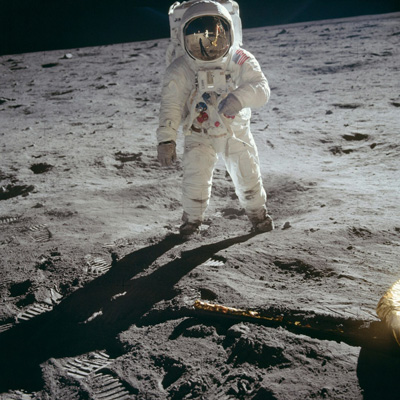
Image: Astronaut Buzz Aldrin on the moon during the Apollo 11 mission. Source: NASA.
Murriyang / the Parkes Radio Telescope also played a key role in tracking Neil Armstrong and Buzz Aldrin’s first steps on the Moon, in July 1969.
The video and telemetry downlink received at Parkes was recorded onto 1/2-inch magnetic tapes that had to be changed every 15 minutes throughout the entire duration of the hours-long moonwalk.
The telescope’s role was originally to provide back-up to NASA’s other tracking stations (in Goldstone, California, and Honeysuckle Creek near Canberra) but was later upgraded to be prime receiver. Many CSIRO staff were involved, at Parkes and elsewhere, in this massive tracking operation.
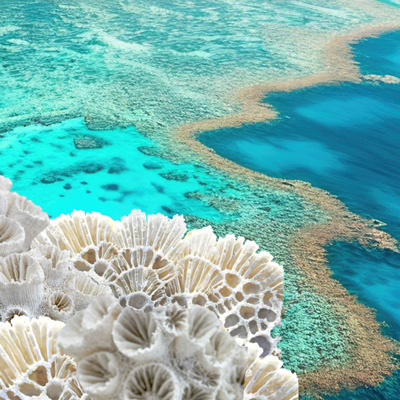
Image: The Great Barrier Reef, QLD. Source: Adobe Stock
At a time when the Great Barrier Reef was viewed purely as a tourist attraction, Professor Dorothy Hill (1907–1997) saw the possibility for studying it to reveal insights into the Quaternary Period (the most recent 2.6 million years of Earth’s history).
She went on to discover the use of fossil corals in sorting out the correlations of Palaeozoic rocks in Australia and expand the knowledge of stratigraphy of eastern Australia, using this information for a revitalised interpretation of continental geology.
Professor Hill was a trailblazer in many ways: she became Australia’s first woman professor in 1959 when appointed a Professor of Geology at the University of Queensland. She also became the first woman Fellow of the Australian Academy of Science in 1956, before going on to serve as Vice-President in 1969 and President in 1970.
Professor Hill was a powerful supporter of women’s educational rights, and the Academy’s Dorothy Hill Medal recognises her contributions to science as well as her work opening up tertiary science education to women.
A biographical memoir of Professor Hill noted that she gained a pilot’s license while she was in England, and that she later had an interest in car rallying. She also served as a Second Officer in the Women’s Royal Australian Naval Service during WWII, where her work included cypher and coding.
Professor Hill was interviewed by Dr John Cole in 1981 for the Academy’s Conversations with Australian Scientists series.
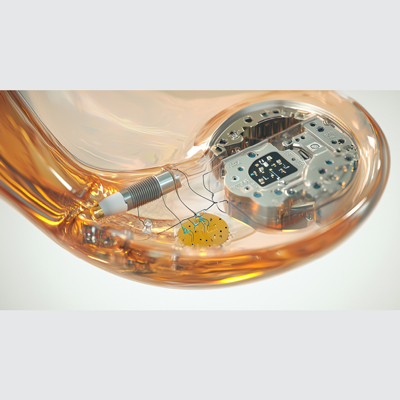
Image: Digital rendering of a cochlear implant showing components and functionality. Source: Adobe Stock, spyrakot
As a child, it was witnessing his pharmacist father struggle with hearing loss that first sparked Professor Graeme Clark’s interest in becoming “an ear doctor”.
He went on to conduct pioneering research into electrical stimulation of the auditory pathways. Working with electrical engineers and other specialists, he led the invention of the Bionic Ear, the first multiple channel cochlear implant. This device provides speech recognition in profoundly deaf adults as well as children, even those who have been deaf since birth, and has been implanted into more than 15,000 people around the world.
Professor Clark was elected a Fellow of the Australian Academy of Science in 1998. He was interviewed by Professor Stephen O’Leary in 2011 for the Academy’s Conversations with Australian Scientists series.

Image: Solar panels. Source: Adobe Stock, Scanrail.
Professor Martin Green’s work has revolutionised solar cell efficiency, resulting in a more than 50% relative improvement in the energy conversion efficiency of the commercially dominant silicon solar cells from 1983 to 2008.
His team was the first to demonstrate two different approaches to improving silicon cell performance that now underpin all modern silicon cell designs. The Passivated Emitter and Rear Contact (PERC) solar cell invented by his team in 1983 continued to be refined and claim global records for cell efficiency; in 2021 it accounted for 91% of worldwide silicon solar module production.
Professor Green was elected a Fellow of the Australian Academy of Science in 1990.
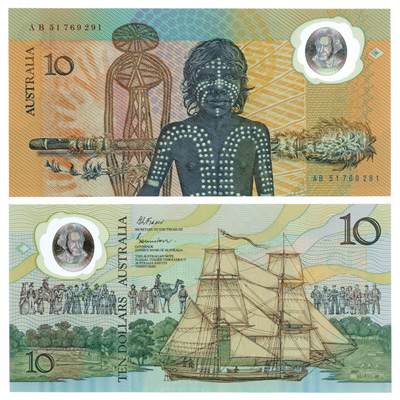
Image: The first polymer banknote was a commemorative $10 banknote issued in 1988 to celebrate Australia’s bicentenary. One side symbolises the original discovery and settlement of Australia by First Nations peoples some 40,000–60,000 years ago; the other side symbolises European settlement. Source: Alamy, Editorial Image LLC
Australia transitioned from the pound to the dollar in 1966, but by the end of that year, authorities had detected more than $100,000 worth of forged $10 notes that were later traced back to a group of forgers in the suburbs of Melbourne.
In response, the Reserve Bank enlisted top scientists from CSIRO to find a solution, including Professor David Solomon – at the time a young, award-winning polymer scientist. Professor Solomon wrote that he came up with an idea after being given a business card printed on plastic by a visitor from Japan, but the entire undertaking involved 20 years of research and development before the release of the first polymer banknote in 1988.
The invention involved the creation of a unique polypropylene material that isn’t commercially available, as well as other security devices such as clear windows, which are difficult to counterfeit.
Professor Solomon was elected a Fellow of the Australian Academy of Science in 1975. He was an expert reviewer for the Academy’s educational article ‘Making Money’.

Image: A generative AI depiction of the WiFi icon over a city skyline. Source: Adobe Stock, tonktiti.
Today, WiFi is used around the world – but the technology underpinning it came from radio astronomy researchers at CSIRO.
While working in the Netherlands in the 1970s, Australian engineer Dr John O’Sullivan invented a Fast Fourier Transform computer chip, which could more rapidly interpret radio signals than existing Fourier Transform chips.
Decades later, Dr O’Sullivan joined a new team back in Australia, including Graham Daniels, Terence Percival, Diethelm Ostry and John Deane. They realised this Fast Fourier Transform technology could be directed at low power radio waves rather than cosmic radio waves – to address the challenge of transmitting large quantities of data wirelessly, which then must be reassembled in the correct order by the receiver. The team invented wireless LAN (WLAN), the precursor to modern WiFi.
Dr O'Sullivan was awarded the Australian Prime Minister’s Prize for Science in 2009 and elected a Fellow of the Australian Academy of Science in 2010.

Image: AI Smart city. Source: Adobe Stock, Tackey, edited by Leah Albert (created for the Australian Academy of Science Public Speaker series using Photoshop generative AI with a stock image base.)
Artificial intelligence is changing the world around us.
Throughout 2025, the Australian Academy of Science is presenting six public talks on ‘AI in science: the promise, perils and path forward’ to explore the current and future implications of AI.
The events look at how AI is helping scientists make breakthroughs in health and medicine, the environment, food and agriculture, safety and security, and science and research. The series also delves into potential risks, limitations and ethical issues as AI becomes increasingly prominent in science and our society.
The series is convened by Academy Fellows Professor Bob Graham and Professor Ian Chubb. A recording of each event is on the event page.
© 2025 Australian Academy of Science